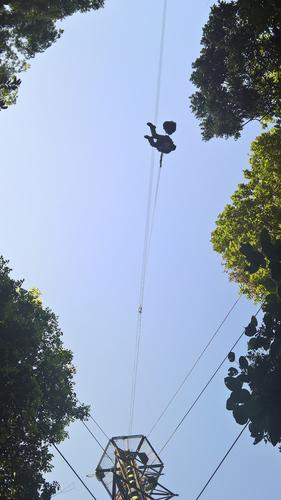Our official English website, www.x-mol.net, welcomes your
feedback! (Note: you will need to create a separate account there.)
A test of community assembly rules using foliar endophytes from a tropical forest canopy
Journal of Ecology ( IF 5.3 ) Pub Date : 2020-01-04 , DOI: 10.1111/1365-2745.13344 Julian Donald 1 , Mélanie Roy 1 , Uxue Suescun 1 , Amaia Iribar 1 , Sophie Manzi 1 , Léonie Péllissier 2 , Philippe Gaucher 3 , Jérôme Chave 1
中文翻译:

使用热带森林冠层的叶片内生菌对群落聚集规则进行测试
更新日期:2020-01-04
Journal of Ecology ( IF 5.3 ) Pub Date : 2020-01-04 , DOI: 10.1111/1365-2745.13344 Julian Donald 1 , Mélanie Roy 1 , Uxue Suescun 1 , Amaia Iribar 1 , Sophie Manzi 1 , Léonie Péllissier 2 , Philippe Gaucher 3 , Jérôme Chave 1
Affiliation

|
- Community assembly theory assumes that ecological communities are spatially delimited into patches. Within these patches, coexistence results from environmental filtering, competition and immigration. Truly delineated communities exist in laboratory studies of microbial cultures in Petri dishes, yet empirical tests conducted in continuous environments often use patches defined by convention as opposed to realized boundaries.
- Here we perform a test of ecological community assembly rules using foliar endophyte communities from a tropical rainforest, where leaves are considered as patches for both fungal and bacterial communities. We determined the diversity of fungal and bacterial endophytes using environmental DNA sequencing of 365 top‐canopy leaves, collected from 38 host trees belonging to 22 different species across a 4‐ha research plot. Three leaves were collected from three or more branches within each tree crown. We tested the effect of host tree species and their level of phylogenetic relatedness on community composition as well as the contribution of geographic distance between leaves to endophyte community diversity.
- Endophyte diversity significantly differed across host tree species, as did community composition. Within certain endophytic orders (Xylariales, Rhizobiales) species assemblages significantly differed across host tree species, but this trend was weaker or non‐existent in other orders known to contain pathogens and saprotrophs (Polyporales, Solirubrobacterales). Phylogenetically related host tree species displayed more similar endophyte communities than expected by chance, but geographically close trees did not. Consistent with the finding of host‐specificity, nearby leaves tended to host more similar communities than distantly positioned ones.
- These findings demonstrate that foliar endophytes are structured by dispersal across small spatial scales, but at the scale of the canopy they display patterns of neutral filtering, with only a small part of variation described by host tree differences. Endophyte communities thus act as a model system in evoking the rules predicted by theoretical community ecology.
中文翻译:

使用热带森林冠层的叶片内生菌对群落聚集规则进行测试
- 群落组装理论假设生态群落在空间上被划分为斑块。在这些补丁中,共存来自环境过滤,竞争和移民。在皮氏培养皿中微生物培养物的实验室研究中确实存在圈定的群落,但是在连续环境中进行的经验测试通常使用约定定义的斑块而不是已实现的边界。
- 在这里,我们使用热带雨林中的叶子内生植物群落对生态群落组装规则进行了测试,其中叶子被视为真菌和细菌群落的斑块。我们通过对365个顶冠叶的环境DNA测序来确定真菌和细菌内生菌的多样性,这些叶是从4公顷研究区内的22个不同物种的38个寄主树中收集的。从每个树冠内的三个或更多分支中收集了三片叶子。我们测试了寄主树物种及其在系统发育上的相关度对群落组成的影响,以及叶片之间的地理距离对内生菌群落多样性的影响。
- 宿主树种的内生菌多样性和群落组成也存在显着差异。在某些内生秩序(木X属,根瘤菌)内,寄主树种间的物种组合存在显着差异,但这种趋势在已知包含病原体和腐生菌的其他阶(Polyporales,Solirubrobacterales)中则弱化或不存在。系统发育相关的寄主树种显示出比偶然预期更多的相似内生菌群落,但地理上接近的树却没有。与寄主特异性的发现一致,与远处的叶子相比,附近的叶子倾向于寄养更多类似的群落。
- 这些发现表明,叶内生菌是通过在较小的空间尺度上分散而构造的,但是在冠层尺度上,它们显示出中性过滤的模式,只有一小部分变化是由宿主树的差异描述的。因此,内生菌群落充当了模型系统,唤起了理论群落生态学预测的规则。









































 京公网安备 11010802027423号
京公网安备 11010802027423号